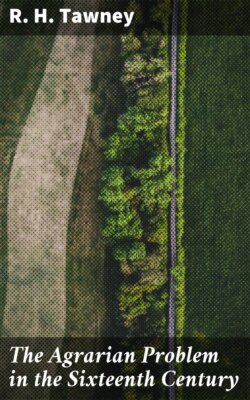Читать книгу The Agrarian Problem in the Sixteenth Century - R. H. Tawney - Страница 2
На сайте Литреса книга снята с продажи.
Table of Contents
ОглавлениеPREFACE
INTRODUCTION ToC
PART I THE SMALL LANDHOLDER
CHAPTER I THE RURAL POPULATION
(a) The Classes of Landholders ToC
(b) The Freeholders ToC
Table II
(c) The Customary Tenants ToC
Table III
CHAPTER II THE PEASANTRY
(a) The Variety of Conditions ToC
(b) The Consolidation of Peasant Holdings ToC
Table IV
(c) The Growth of a Land Market among the Peasants ToC
CHAPTER III THE PEASANTRY (continued)
(d) The Economic Environment of the Small Cultivator ToC
Table V
Table VI
CHAPTER IV THE PEASANTRY (continued)
(e) Signs of Change ToC
(f) The Growth of Competitive Rents on New Allotments ToC
(g) The Progress of Enclosure among the Peasantry ToC
PART II THE TRANSITION TO CAPITALIST AGRICULTURE
CHAPTER I THE NEW RURAL ECONOMY
(a) Motives and Causes ToC
(b) The Growth of the Large Leasehold Farm ToC
(c) Enclosure and Conversion by the Manorial Authorities ToC
Table IX
Table X
I
II
Composed of (a) Thirty-two Farms on
Twenty-three Manors in Wilts and One Manor in Dorset
(b) Sixteen Farms on Thirteen Manors in
Norfolk and Suffolk
(c) Seventeen Farms on Thirteen Other Manors
Mainly in South and Midlands
III
Table XI
CHAPTER II THE REACTION OF THE AGRARIAN CHANGES ON THE PEASANTRY
(a) The Removing of Landmarks ToC
(b) The Struggle for the Commons ToC
(c) The Engrossing of Holdings and Displacement of Tenants ToC
In the West Felde
Table XII
(d) The Agrarian Changes and the Poor Law ToC
CHAPTER III THE QUESTION OF TENANT RIGHT
(a) The Tenants at Will and the Leaseholders ToC
(b) The Copyholders ToC [502]
Table XIII
(c) The Undermining of Customary Tenures ToC
PART III THE OUTCOME OF THE AGRARIAN REVOLUTION
CHAPTER I THE AGRARIAN PROBLEM AND THE STATE
(a) The Political and Social Importance of the Peasantry ToC
(b) Legislation and Administration ToC
(c) Success and Failure of State Intervention ToC
CHAPTER II GENERAL CONCLUSIONS ToC
APPENDIX I ToC
APPENDIX II ToC
GENERAL INDEX
INDEX OF PERSONS
